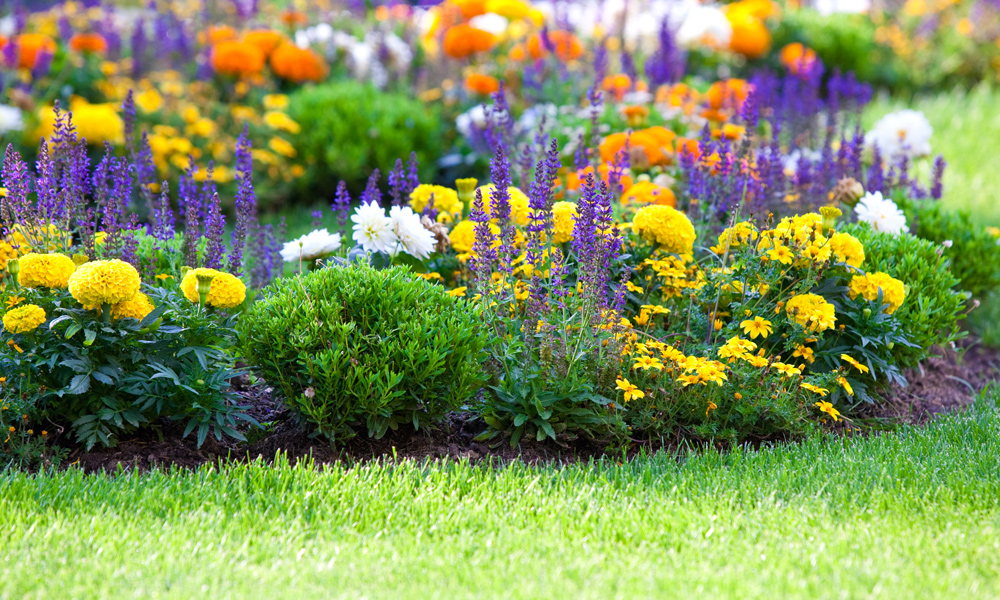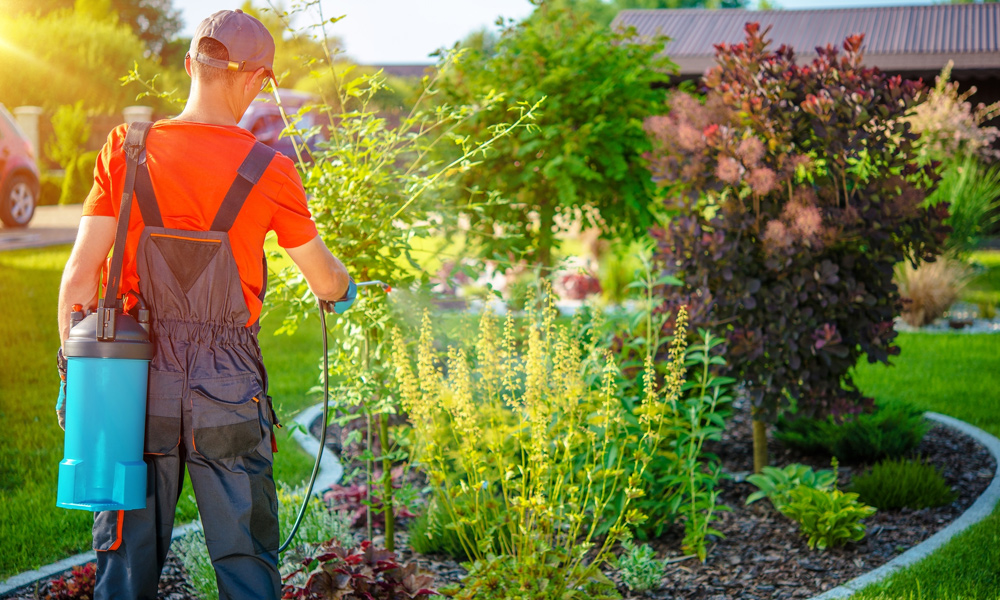Tropical Sod Webworms – A Threat to Our Lawns?
Introduction
Tropical sod webworms can wreak havoc on your lawn during the humid, tropical or sub-tropical seasons. These insects are not actually worms, as their name would suggest, but are instead a type of lawn caterpillar that has over twenty different species. It is unlikely that you will notice an infestation of tropical sod webworms until it has become severe, but even minor infestations can cause issues to your lawn.
Tropical sod webworms are an insect that lives in your grass from the root. They are born in these locations and feed on the leaves at the base. This can cause your grass to die, appearing dry and brown in your yard.
About Tropical Sod Webworms
Tropical sod webworms are born in the springtime, as most insects in this species lay their eggs around this time. The lifespan of a tropical sod webworm is quite short by our standards, as it only takes ten weeks for them to grow from egg to adult. However, this doesn’t mean that they can disappear easily. As they grow quickly, it is possible that your garden is being infested by several generations of sod webworms.
Unlike a lot of insects, winter will not kill off tropical sod webworms, so leaving them to the elements is not an effective treatment. Sod webworms coat themselves in a silk lined cocoon during the winter months to help them survive. As soon as spring comes around again, the tropical sod webworms will start feeding on your lawn once more.
How Do Tropical Sod Webworms Damage Lawns?
Once tropical sod webworms mature they become moths which will not damage your lawn. This means that you need to handle the young. When tropical sod webworms mate, the female moths will lay hundreds of eggs which cause problems to your lawn. You are likely to notice a tropical sod webworm infestation during the spring as they hatch.

Tropical sod webworms feed on grass, and their chewing removes the top layers of your lawn, leaving it more vulnerable. As tropical sod webworms grow, they can cover more ground, eating and damaging more of your lawn. This will cause large areas of brown sod, causing your grass to look as though it has been through a drought. The grass will become damaged and brown.
Tropical Sod Webworm Damage Vs. Drought Damage
If you have a tropical sod webworm infestation, you may not even notice that this is the case. Many people mistake the damage that tropical sod webworms cause as damage caused by a drought. As these insects attack your garden during the hotter seasons, this is an easy mistake to make. Tropical sod webworms damage your lawn by feeding on it, which kills the plants from the base. This makes them dry, have stunted growth, and become brown.
These are also signs of a drought which is very common in tropical seasons. However, if you try to treat your lawn for drought when you actually have a tropical sod webworm infestation, then you could be making the issue worse.
It is important to remember that drought will affect the whole lawn, causing it all to be brown and dry. However, a tropical sod webworm infestation will usually only be in the sunny locations of your lawn. They are common in dry spots in the yard, such as along driveways or curbs. If you notice that your lawn is dying in small sections, then it is likely that you have a tropical sod webworm infestation and need to treat it accordingly.
How To Treat Tropical Sod Webworm Infestations?
It is essential that you try to treat a tropical sod webworm infestation as soon as you notice it to save your lawn. The longer you leave the issue, the less lawn you will have left to save. Remember that sod webworms mature quickly meaning that you may be dealing with several generations of infestation. This is why it is vital for you to learn the lifecycle of sod webworms, so you know when it is best to act.
You can remove sod webworms from your lawn using pesticides or insect killers. These solutions work best when applied in specific locations. Applying these kinds of chemicals to your entire lawn could kill beneficial predators or even cause more damage than necessary. Using chemicals in specific locations where the tropical sod webworms are born is going to be more effective.
You can also remove sod webworms using warm water and dish soap. Pour this mixture onto affected areas; the water should cause the tropical sod webworms to float to the surface. The dish soap should be toxic for them, but if you find that this has not killed the insects, you can use a rake or pesticides to finish the job.
The best way to treat any kind of pests in your garden is to leave pesticides or chemicals as a last resort. It is always more beneficial to try natural and more gentle solutions first as this is better for your garden and other wildlife that lives there.
How To Prevent Tropical Sod Webworm Infestations?
As well as being able to effectively treat the problem as it appears, the best way to care for your lawn is preventing the issue in the first place. Keeping your lawn healthy is a great way to prevent tropical sod webworms from hatching and then destroying your garden. This means that you need to be diligent and dedicated to the care of your yard.
Regularly watering your lawn is a great way to prevent tropical sod webworm infestations. Tropical sod webworms operate best, as their name suggests, in tropical or sub-tropical conditions. Keeping your lawn moist and watered will prevent the hatchlings from settling in as easily and destroying your lawn.
Ensuring that you are regularly cutting the lawn and limiting the amount of thatch that is growing can also keep sod webworms at bay. However, when mowing your lawn, it is important that you don’t overdo it. Allow for at least three inches of lawn to keep your garden healthy, as this will make your lawn better equipped to withstand issues including pests.

You may also want to consider using a new type of grass throughout your garden if you are in an area that is susceptible to tropical sod webworms. Turf grass is an excellent solution for those who want to maintain a healthy and luscious garden without worrying about pest infestations. Turf grass is an ornamental lawn that can make your garden appear attractive and still provides soft carpeting, without attracting pests. Some turf grass has been specially formulated to repel pests, keeping your garden healthy for longer.
If you choose to stick with a planted lawn, then you should take time to make sure it is properly fertilized. Regularly fertilizing your lawn will keep it growing healthy and can actively help it bounce back after infestations.
When Is It Time To Call A Professional?
It is possible to prevent and remove tropical sod webworm infestations from your garden independently. If you manage to take proper and regular care of your lawn, you may never have to experience a sod webworm infestation. Calling a professional exterminator should always be a last resort. This is not only because it can be expensive, but also they can only make a difference to large infestations.
On a similar note, some of the chemicals that professionals use could damage your lawn further and would only be useful in the case of extreme infestation. This is not always the case, as professional pest-management services will attempt to keep your garden healthy while removing the issue.
A tropical sod webworm infestation can seriously damage your lawn and cause your garden to become unhealthy. These infestations will kill off your grass, making it appear brown and dry. For small infestations, this will only appear in small areas. However, the bigger the issue is, the more significant the consequences will be. If you are in a location that suffers from tropical sod webworms regularly, then you may benefit from contacting a professional. Likewise, if the issue has become too much for you to handle on your own.
Conclusion
Tropical sod webworms can cause a lot of damage to your lawn and garden. After you have spent a lot of time making your garden attractive and inviting, you do not want a tropical sod webworm infestation. As these insects feed on your grass from the root up, they can kill your lawn and make it appear brown.
Treating infestations as early as possible is an effective way to get your garden back. You can use natural solutions, such as water and soap, or pesticides, to kill off tropical sod webworms. Your main concern is the eggs of tropical sod webworms, so you need to act fast before they hatch. As well as responding quickly when you notice an infestation, the best solution will always be prevention.
Keeping your lawn short, watered and regularly fertilized will keep it healthy and prevent tropical sod webworms from settling in. If you live in a location that is particularly susceptible to tropical sod webworms, then you may benefit from installing turf grass. This will still give you the appearance of a healthy lawn without any of the maintenance.
Using chemicals or calling a professional exterminator should be the last resort when handling tropical sod webworm infestations. In order to effectively treat this kind of infestations, you should educate yourself on the lifecycle of sod webworms, so you know when is best to act.